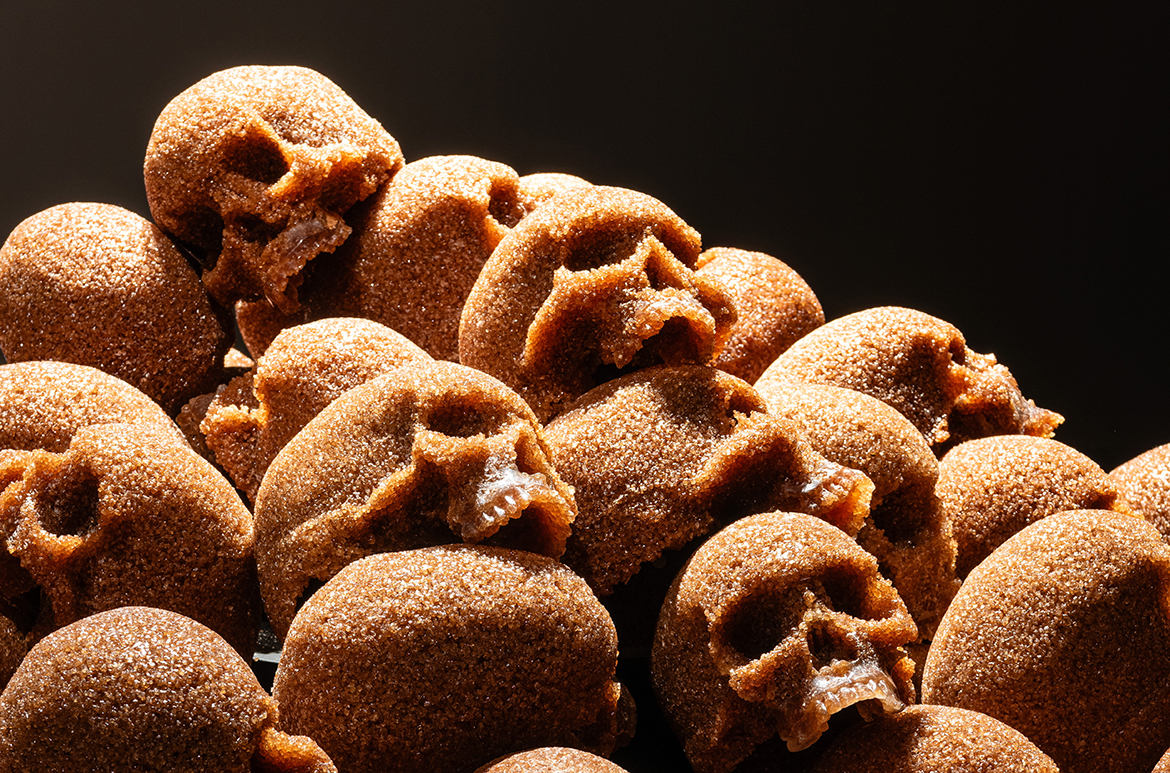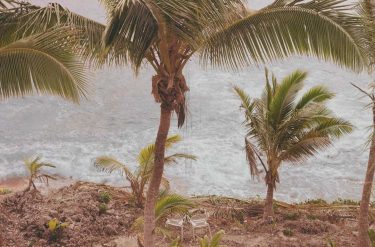Truth-telling has become an integral act of educating the wider community about colonialism and systemic racism. Truth-telling allows for the reshaping of past narratives and acts as a stepping stone to a future that elevates diverse voices and a process of healing. Jasmine Togo-Brisby is a fourth-generation Australian South Sea Islander woman, artist and truth-teller.
Togo-Brisby’s great-great-grandparents were taken from Vanuatu as part of Australia’s slave trade, known as ‘blackbirding’, which began in the mid 1800s. At the age of eight, her great-great-grandmother was forcibly removed from her family and her community to work as a ‘domestic’ for the Wunderlich family in 1899.1 Memories of this traumatic time are not stories from a distant history; rather, these memories relate to events that, in some cases, are only a generation past. Togo-Brisby’s practice can be confronting and chilling as it presents the human face of suffering and loss inherent in Australia’s slave-trading history, particularly its generational repercussions.
Jasmine Togo-Brisby ‘Bitter sweet’ 2015-22


In her work Bitter sweet 2015 (illustrated), Togo-Brisby uses sugar and resin to create a mound of life-sized skulls, a response to the discovery of a mass unmarked grave on a Bundaberg sugar plantation on the eve of the 150th anniversary of the recognition of Australian South Sea Islanders as a distinct cultural group.2 Art historian Kirsty Baker describes the work’s power: ‘The use of sugar as a medium works on this metaphoric level, its sickly-sweet aroma dramatically heightening the horror of the subject matter’.3
Togo-Brisby uses archival research and stories passed down from her grandmother as anchors for her work. Sometimes this way of working can trigger confronting memories, but Togo-Brisby says her practice is about empowerment and hope, rather than trauma and its long-term effects. Togo-Brisby’s relationships with her Elders — specifically the women in her lineage — profoundly shape her work. At times, these women are her subjects; at other times, her intended audience — they can also be the catalyst for its creation. Togo-Brisby describes a woman’s body as an archive and a vessel for her practice of truth-telling:
Within our culture and history, I really do see everything as an archive — particularly the female body. I have always been surrounded by women — as the holders of our knowledge. Mum heard all the stories of my Granny firsthand . . . and I carry these [stories] too . . . this [connection with women] is part of you, part of this vessel. Granny feels part of me as does my Mum, as does my daughter. As a female you’re born with all the eggs you are ever going to have. Womb-ception is the fact that the egg which eventually became me grew inside my mother while she was growing inside of my grandmother’s womb, and when my mother held me in her womb, she also held my daughter . . . This notion is so special.4
Togo-Brisby has shared that sometimes the ideas for her work feel like they come from ‘somewhere else’, another time and place.5 Perhaps there is a place in our spirit where we are connected to all the women who have come before us and all those who will come after us — a shared consciousness where memories of the past and hopes for the future are found. Perhaps this is the place where we will sit with our Elders, sharing stories of our lived existence.
Jasmine Togo-Brisby has visited this place in her dreams. She believes it is an archive of her ancestors’ stories, songs, lessons and craft. She believes her ancestors’ legacy lives through her and her work. Perhaps this is what the artist means when says she is the embodiment of her ancestors’ ‘wildest dreams’, but perhaps she is also their reality.
Moale James is a Papua New Guinean–Australian storyteller and independent curator, and a member of the ‘sis’ curatorial team.
This was originally published in the Queensland Art Gallery | Gallery of Modern Art exhibition publication sis: Pacific Art 1980-2023 available at the QAGOMA Stores and online.
1 Jasmine Togo-Brisby, ‘Dear Mrs Wunderlich’, Page Galleries: Page 1987, 23 July 2020, <pagegalleries.co.nz/exhibitions/107/overview/>, viewed February 2023.
2 John Taylor, ‘Service honours heritage-listed South Sea Islanders gravesite in Bundaberg’, ABC News, 16 August 2013, <abc.net.au/news/2013-08-16/service-honours-heritagelisted-south-sea-islanders-gravesite/4891894>, viewed March 2023.
3 Kirsty Baker, ‘Jasmine Togo-Brisby’, Artist Profile, issue 55, 2021, <artistprofile.com.au/jasmine-togo-brisby/>, viewed February 2023.
4 Jasmine Togo-Brisby, conversation with the author, Brisbane, 1 November 2022.
5 Jasmine Togo-Brisby, conversation with the author.
Acknowledgment of Country
The Queensland Art Gallery | Gallery of Modern Art (QAGOMA) acknowledges the Traditional Owners of the land on which the Gallery stands in Brisbane. We pay respect to Aboriginal peoples, Torres Strait Islander peoples, and Elders past and present. In the spirit of reconciliation, we acknowledge the immense creative contribution First Australians, as the first visual artists and storytellers, make to the art and culture of this country.
Sensitive content note
Bitter sweet 2015 contains sensitive content that may be considered traumatising for members of the Australian South Sea Islander community, or visitors to ‘sis: Pacific Art 1980-2023’ who have personal connections to plantation enslavement.
‘sis: Pacific Art 1980-2023’ / Marica Sourris and James C. Sourris AM Galleries (3.3 and 3.4), Gallery of Modern Art / 26 Aug 2023 – 25 Aug 2024
#QAGOMA


